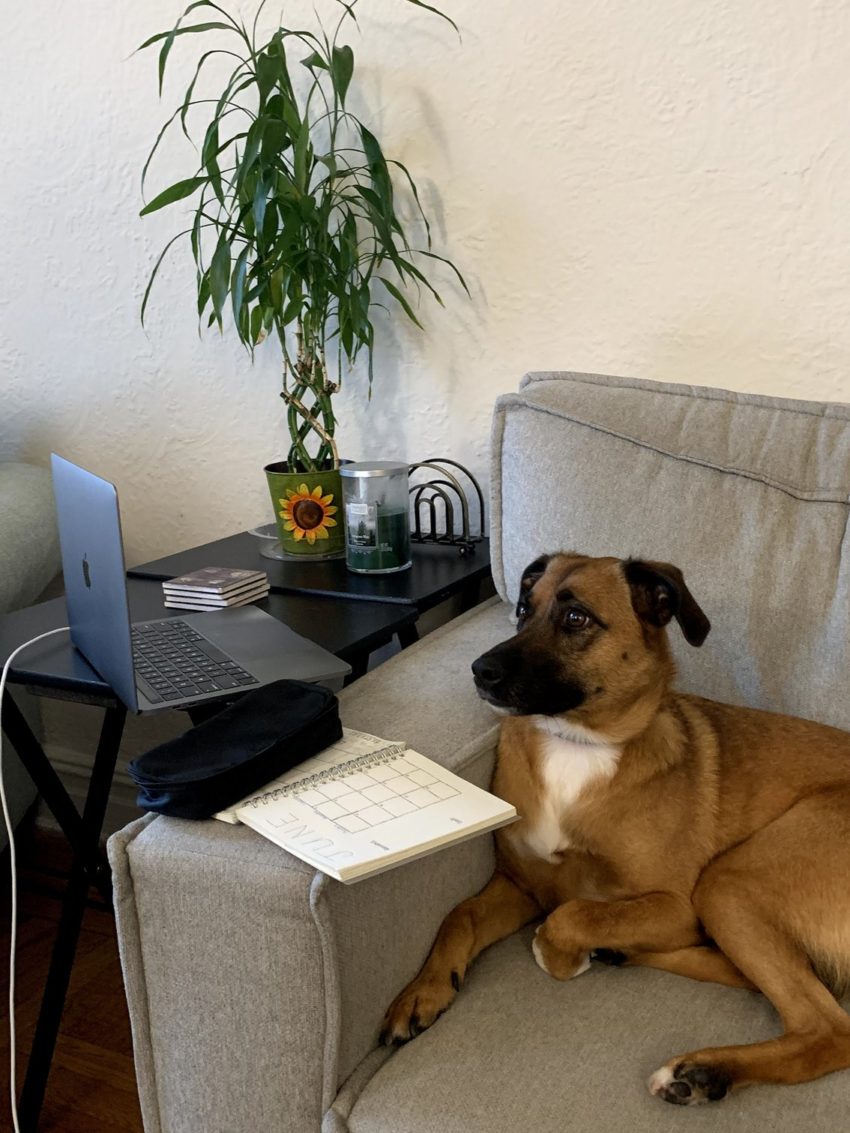At the end of last year, I started watching a lot of bullet journal setup videos on Youtube (one of my favorites is AmandaRachLee). At the time, I was tired of using the planner I had because it was dated and I wasn’t keeping up with all the dates, which means I wasn’t using all the pages. I became interested in having the flexibility to make a setup that would fit my lifestyle instead of wasting money on planners that have setups that I don’t use and it would ensure I would use every single page of a notebook.
For those who don’t know, bullet journaling is an analog way of keeping track of things that are happening in the present, planning for the future and allows you to reflect on the past in quick, bulleted lists. With different bullet journal setups you can keep track of your mood, habits, expenses, places you’ve visited, and the list goes on for what you can keep track of. A lot of people use their bullet journals to creatively express themselves with different themes for the month and to keep track of important notes that they want to refer back to later. Although there are a lot of apps to keep track of monthly and daily to do lists and everything can be added to your google calendar, there is something about writing things down and crossing it off the list that makes me better remember what I need to do and prioritize my work when I see it on paper. Using a bullet journal gives me a more holistic view of what I have or have not completed to help me plan my life and work better.
Bullet journals can be quite expensive for a notebook, so for my first time trying out bullet journaling, I didn’t want to invest too much money. I went to Muji and bought this plain white dotted paper notebook for $5. As I’ve been getting into the rhythm of setting up my bullet journal, I wanted to share which spreads have worked for me so far by walking through my June setup!
Quarterly view
I keep this view very simple since it’s already daunting to think about what goals I want to accomplish a full quarter out. I break this view into “Personal” and “Professional” categories so that I can be very clear about what I want to accomplish in each category. In the personal category I might include saving money, personal development learning, and books I want to finish. In the professional category this will include goals I want to accomplish for my blog and for work. I don’t have a photo of this because we’re currently in Q2.
Monthly view
The monthly view is my most creative spread (by creative, I mean most colorful) and the one that takes me the longest to put together. I will draw a full calendar spread and pick a quote to write that best represents that month or the energy that I would like to manifest that month. From there, I write what my most important reminders and goals are for the month, then I will fill in the important events going on in the month. This is the only view I do not track work related tasks or events in, unless it fits within my professional goals. I mostly use it for personal tracking only to keep this view clean and not overwhelming.
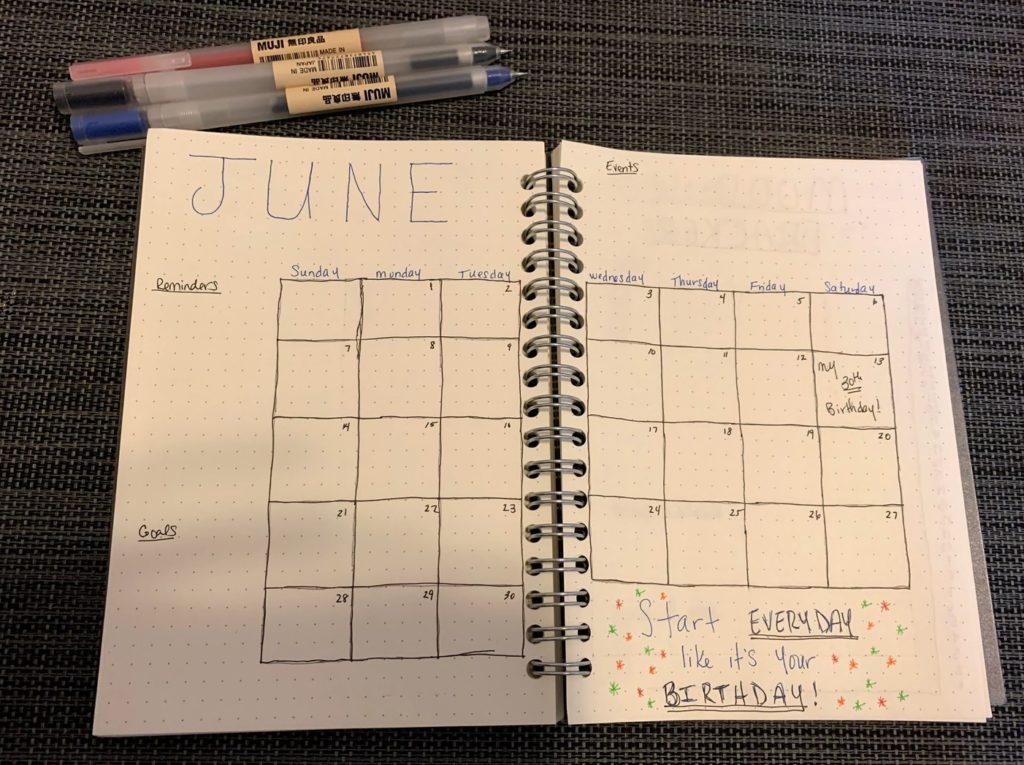
Mood Tracker
I love tracking how I’m feeling. I tried to switch up this one spread by using it as a habit tracker instead for May, but I missed tracking how I was feeling and did not use the habit tracker at all. So, for this month I’m bringing the mood tracker back. For the majority of the days, I know I’m in happy moods, but for days that I am not I like to make a note of it and it helps me remember why. I do like seeing the trend of many happy days and it forces me to reflect on what is contributing to me remaining happy.
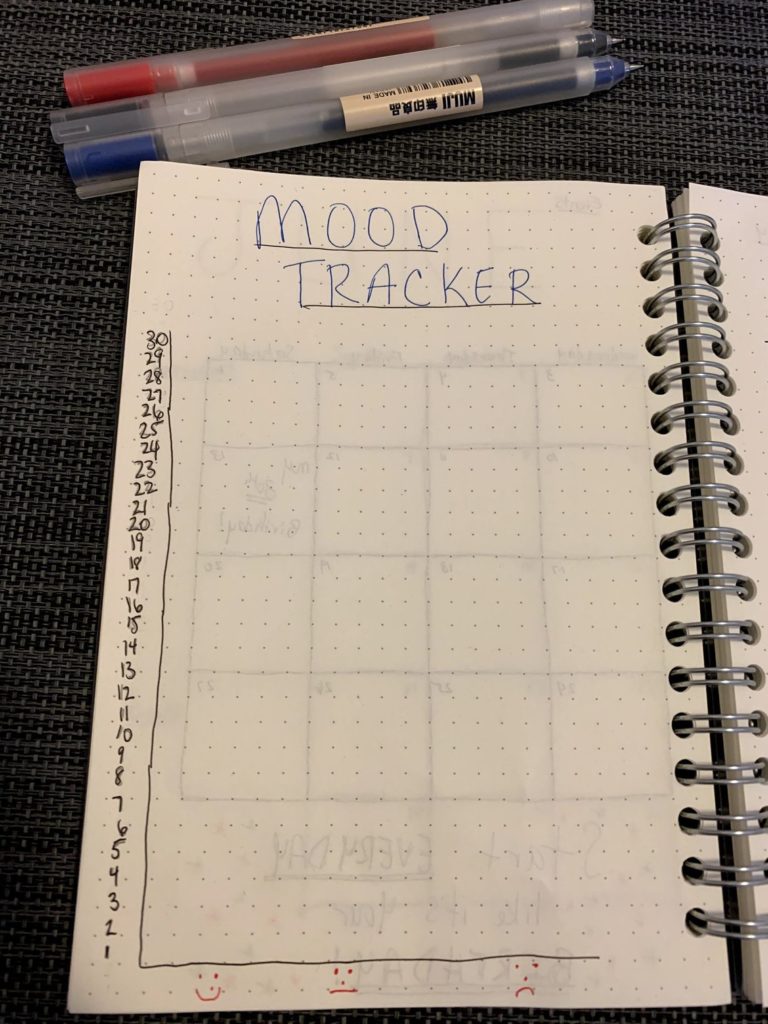
Weekly spread
This is another spread that is kept very simple. I will track my weeks from Monday – Friday since I try to keep my weekend schedules more loose. Every Sunday, I will reflect on what I did or did not accomplish last week to prepare for the coming week. Anything I did not complete the week before will be added to the new week’s list, including new tasks coming up. I don’t cap the amount of tasks I add to this list; I will look at what’s coming up on my google calendar and brain dump a list of tasks that will be relevant for the week. This helps make sure I won’t forget anything that needs to happen when I start putting my daily spread together. In this weekly spread I also like to include a “meetings I need to schedule” section and “3 wins of the week” to keep track of my top weekly accomplishments.
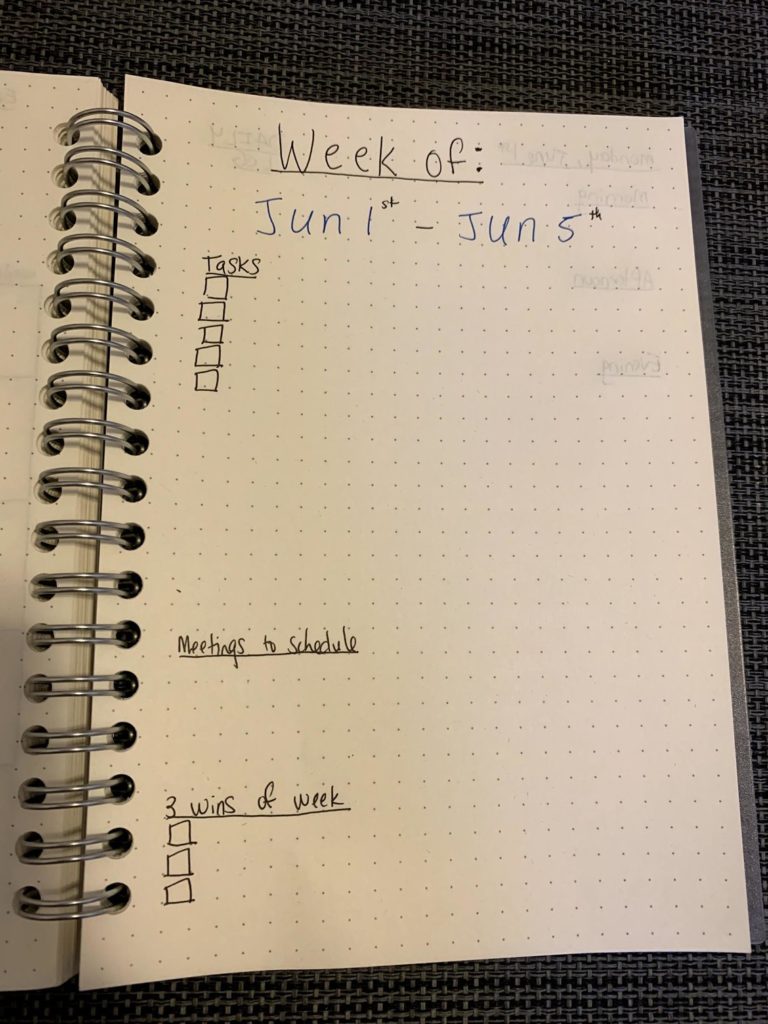
Daily spread
The daily spreads is my last spread that I also keep simple. This spread is my favorite because I figured out the best way I like to keep track of my to dos on a daily basis. I like to create my daily to do lists in 3 sections: morning, afternoon and evening. This is a concept I did take from one of the planners I was using that I found the most useful to provide structure of what I can accomplish in the day. If I have a lot of meetings in the morning, I know that I can only fit one or maybe no tasks in the morning, so the bulk of my work would be tracked in the afternoon. If I have a meeting free day, I try to balance the amount of tasks I can complete in the morning and in the afternoon. I try to stick to 3 tasks in both the morning and afternoon section so that I am not overwhelming myself throughout the day. I use the evening section to remind me of workouts, any blog work I need to do, or reading time I’d like to spend.
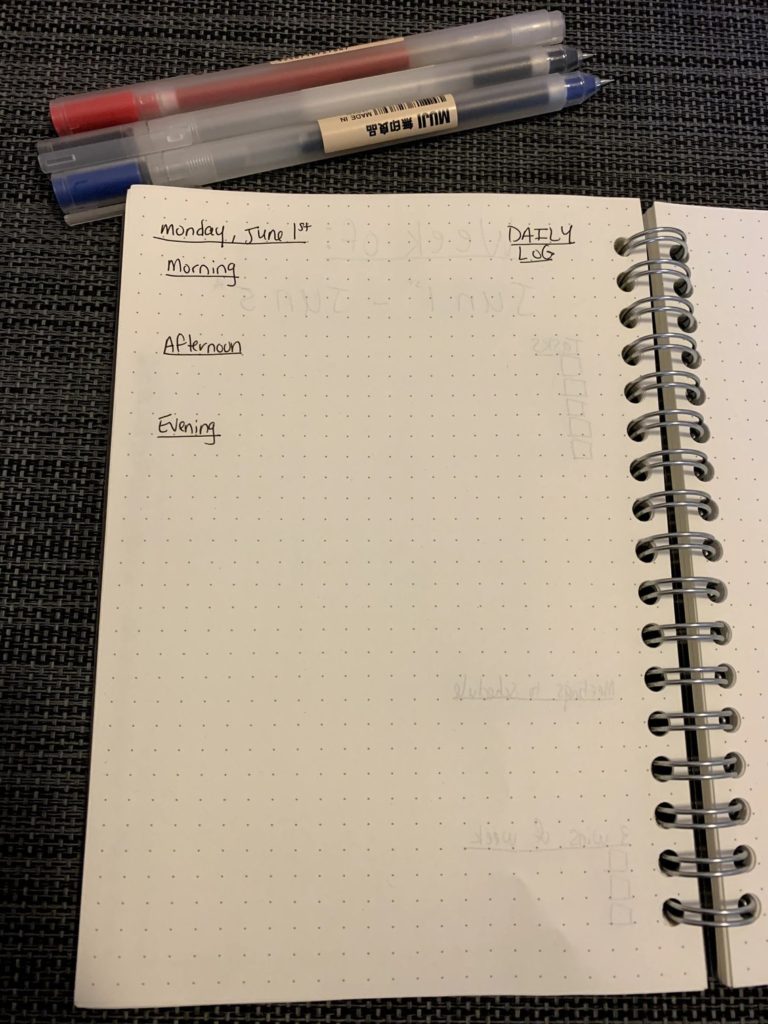
I don’t think a bullet journal setup is something that needs to be planned out or set in stone beforehand. Bullet journaling allows for a lot of flexibility and experimenting to see what are the best visual ways to keep track of things happening in your life. I’ve been bullet journaling since November 2019 and I am still figuring out what layouts work best for me (I still watch a ton of bullet journal set up videos; Youtubers usually post a new one every month). I definitely want to keep using this style Muji notebook since it is very affordable, but who knows I may get fancy and buy an official bullet journal. For those who love using a pen and paper to keep track of everything, I suggest trying out bullet journaling. Pick up any notebook and get started!
